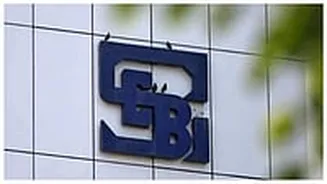Understanding Unclaimed Funds
Unclaimed amounts within the context of non-convertible securities refer to funds that investors have not claimed within a specified timeframe. These funds can
arise from various sources such as interest payments, maturity proceeds, or other distributions related to the securities. The current lack of standardized rules across different entities leads to varied practices in how these funds are managed, including the period for which they are held and the procedures for investors to reclaim them. This variability can create confusion and difficulties for investors trying to recover their money. Furthermore, it introduces inefficiencies for the entities responsible for managing these funds. SEBI's standardization efforts aim to address these issues by establishing a unified framework that promotes transparency, investor protection, and operational efficiency.
SEBI's Objectives Outlined
The primary objective behind SEBI's move to standardize the rules is to enhance investor protection and streamline the process for reclaiming unclaimed amounts. By implementing uniform guidelines, SEBI seeks to ensure that investors have a clear and consistent understanding of their rights and the procedures to follow for claiming their funds. Standardization aims to reduce the complexity and potential for discrepancies that currently exist across different entities. The unified approach will simplify the process of identifying, tracking, and claiming unclaimed funds, making it easier for investors to access what is rightfully theirs. This, in turn, boosts investor confidence in the securities market by demonstrating SEBI's commitment to safeguarding their interests and promoting transparency in financial operations.
Key Areas of Focus
SEBI's standardization efforts will likely encompass several critical areas. One key focus is establishing a consistent holding period for unclaimed amounts, which will define how long entities must hold the funds before transferring them to a designated authority. A second area will be outlining detailed procedures for investors to claim their funds. This may involve specifying the documentation required, the channels through which claims can be made, and the timelines for processing these claims. Moreover, the proposed standards may address the reporting requirements for entities that manage these funds. This could include guidelines on how often and in what format the entities must report the unclaimed amounts to SEBI or other regulatory bodies. The goal is to make the process more accessible and transparent for investors and provide a clear framework for entities to follow.
Impact on Investors
The proposed standardization is poised to bring significant benefits to investors holding non-convertible securities. Foremost, it will simplify the process of reclaiming unclaimed funds. With unified procedures, investors will no longer need to navigate different rules and requirements based on the entity that issued the securities. This consistency can save time and reduce the likelihood of confusion and errors. Additionally, standardizing the holding period means investors will know precisely how long their funds will be held before they can claim them. Clear guidelines will also boost investor confidence. A transparent, investor-friendly framework indicates a commitment to protecting investor interests. This helps in building trust in the securities market and encouraging greater participation. The overall impact should include greater ease of fund recovery, increased transparency, and stronger investor protection, ultimately benefiting all stakeholders.
Impact on Entities
Entities managing non-convertible securities will also be significantly affected by SEBI’s standardization efforts. The primary benefit for these entities will be enhanced clarity and reduced regulatory ambiguity. With a clear set of uniform rules, they will have a straightforward framework to follow in handling unclaimed amounts. This clarity helps streamline internal processes, making them more efficient and reducing the potential for non-compliance. Standardized reporting requirements also assist entities by providing a clear structure for documenting and reporting unclaimed funds. The reduction of ambiguity also lowers the risk of legal and regulatory challenges, creating a more stable operating environment. Improved investor relations may also be a benefit. By adhering to standardized practices, entities can demonstrate a commitment to investor protection, which can enhance their reputation and build trust.
Implementation Challenges
While the standardization of rules offers numerous advantages, there may be challenges during implementation. One significant hurdle could be the modification of existing internal systems and procedures by entities. They will likely need to adjust their operations to align with the new, unified guidelines. This may necessitate investments in technology and training to ensure that employees can effectively manage the new processes. Another challenge is the harmonization of diverse practices. With various entities currently employing different methods for managing unclaimed amounts, achieving complete consistency across the board could be complex. This requires careful planning and coordination to ensure that all entities are capable of adhering to the standardized rules. Furthermore, there might be a need for robust oversight mechanisms to ensure compliance and enforce the new standards effectively. This could involve regular audits, reporting requirements, and penalties for non-compliance.
Future Regulatory Actions
SEBI's move to standardize the rules concerning unclaimed amounts for non-convertible securities is likely to pave the way for additional regulatory actions in the future. Once the initial standardization is in place, the regulator may consider refining and updating these rules based on practical experience and market feedback. This might involve periodic reviews of the guidelines to ensure they remain effective and aligned with the evolving needs of investors and entities. The future regulatory actions could include expanding the scope of standardization to encompass other types of securities or financial instruments, thus broadening the range of investor protections. SEBI might also introduce technological enhancements to further streamline the processes for managing and reclaiming unclaimed amounts. This could include online portals or digital platforms to simplify claims processing and improve transparency. The ongoing goal will be to adapt regulations to reflect the dynamic nature of the financial market.

















